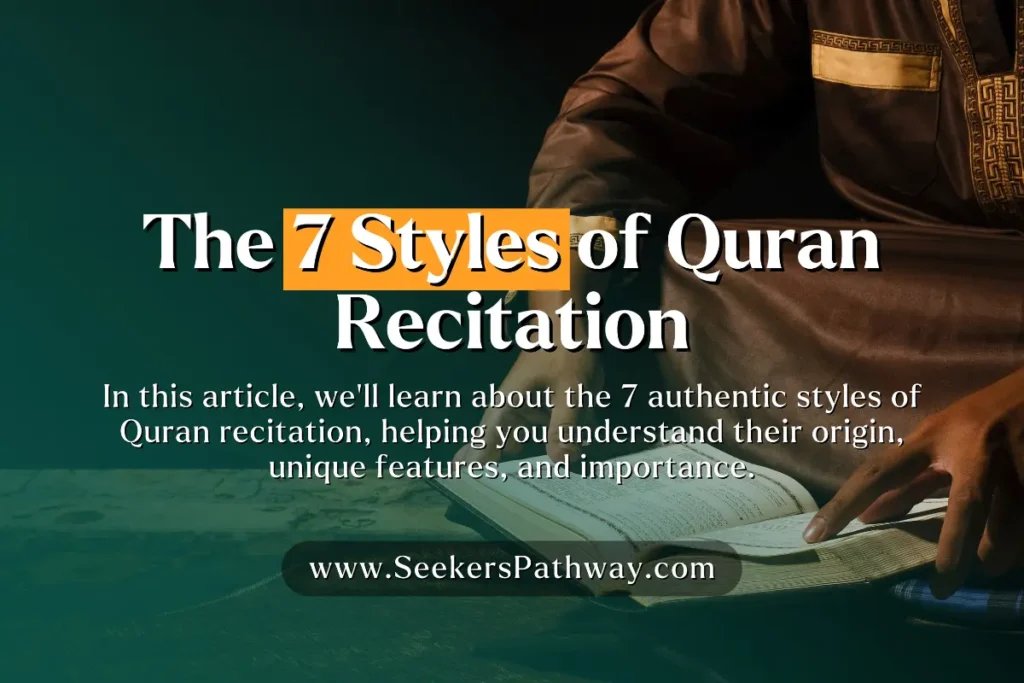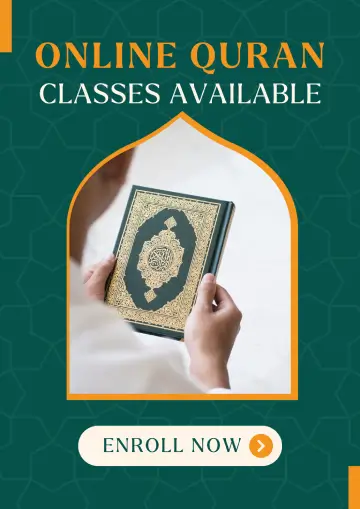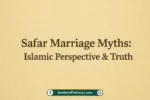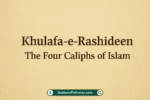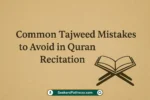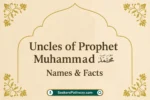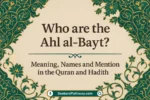Quran, as the literal word of God, has been preserved exactly in its original form as it was revealed. Muslims worldwide use different styles of recitation called Qira’at to read it. These styles each have their nuances in pronunciation, rhythm, and tone, reflecting the richness of Islamic tradition. In this article, we’ll learn about the 7 authentic styles of Quran recitation, helping you understand their origins, unique features, and importance.

What are the 7 Styles of Quran Recitation?
The Quran was revealed to the Prophet Muhammad (ﷺ) in 7 ahruf (modes), meaning variations in pronunciation that made it easier for different Arab tribes with different dialects to understand and memorize it. These ahruf have been preserved through 7 Qira’at styles, each associated with a different master reciter and transmitted through verified chains of students.
The 7 Canonical Qira’at Styles:
- Qirat Hafs ‘an Asim
- Qirat Warsh ‘an Nafi‘
- Qirat Qalun ‘an Nafi‘
- Qirat Al-Duri ‘an Abu ‘Amr
- Qirat Khalaf ‘an Hamzah
- Qirat Shuba ‘an Asim
- Qirat Ibn Kathir
Each of these styles has unique characteristics in pronunciation, word choice, and sometimes even grammatical variations. Let’s examine each one to see how they are different and their historical roots.
1. Qirat Hafs ‘an Asim
- Popularity: Most widely used across the world, particularly in the Middle East, South Asia, and among non-Arab Muslims.
- Origin: This style is based on the recitation of Asim, who was a renowned reciter in Kufa, Iraq. Hafs, his student, faithfully transmitted his teacher’s methods and ensured its accuracy and consistency.
- Unique Features: Known for its clear, simple pronunciation and easy flow, Hafs ‘an Asim is especially appreciated for its phonetic simplicity and clarity, making it accessible for non-Arabic speakers.
- Significance: Hafs ‘an Asim’s universal acceptance has made it the most widely published version of the Quran.
2. Qirat Warsh ‘an Nafi‘
- Popularity: Predominantly recited in North and West Africa, including countries like Morocco, Algeria, and parts of Sudan.
- Origin: Warsh learned his recitation from Nafi‘, a famous reciter from Medina. Warsh’s unique style reflects the linguistic heritage of the region where it became popular.
- Unique Features: Warsh ‘an Nafi‘ has distinct differences in vowel pronunciation and elongation. For instance, some vowels in Warsh recitation are lengthened more than in Hafs. Warsh also varies in certain word pronunciations, offering a softer, melodic flow.
- Significance: This style connects to the early days of Islam in Medina, making it an important heritage of the Prophet’s city.
3. Qirat Qalun ‘an Nafi‘
- Popularity: Commonly practiced in parts of North Africa, especially in Libya and Tunisia.
- Origin: Qalun, another student of Nafi‘, faithfully transmitted his teacher’s recitation style with a slight variation in pronunciation.
- Unique Features: Qalun ‘an Nafi‘ is marked by certain vowel shifts and subtle differences in syllable emphasis. It is also considered melodic, though with different rhythmic emphases from Warsh.
- Significance: This style has a rich, historical connection to the classical Arabic dialects, reflecting a close relationship with the language spoken in early Islamic periods.
4. Qirat Al-Duri ‘an Abu ‘Amr
- Popularity: Predominantly recited in parts of Sudan and Somalia.
- Origin: This style originates from the recitation of Abu ‘Amr, who was from Basra. His student, Al-Duri, became the leading transmitter of this Qira’at style.
- Unique Features: Known for subtle variations in pronunciation, such as the way certain letters are emphasized. Al-Duri’s style has more distinct stops and pauses, providing a rhythm that feels unique among the Qira’at.
- Significance: Al-Duri’s recitation connects Basra’s linguistic influence with the Quranic tradition, offering a different Arabic dialect’s flavor in Quranic recitation.
5. Qirat Khalaf ‘an Hamzah
- Popularity: Less widely known but still practiced by specific scholarly circles across the Muslim world.
- Origin: Hamzah, a reciter from Kufa, developed this style, later refined and passed on by his student Khalaf.
- Unique Features: Khalaf’s recitation style includes unique pauses and pronunciations, often requiring more technical mastery. It’s distinguished by variations in vowel and consonant length, as well as slight grammatical variations.
- Significance: This style is recognized for its complexity and requires precise articulation, making it a respected choice among advanced reciters.
6. Qirat Shuba ‘an Asim
- Popularity: Mostly practiced by scholars in parts of Iraq and Iran.
- Origin: This style is another transmission from Asim, taught by his student Shuba.
- Unique Features: Similar to Hafs ‘an Asim but with slight modifications in pronunciation, Shuba’s version has variations in specific verses, providing alternative phonetic interpretations.
- Significance: This style showcases the diversity within Asim’s teachings, preserving a slightly different version of the well-loved Hafs recitation.
7. Qirat Ibn Kathir
- Popularity: Common in parts of Yemen.
- Origin: Ibn Kathir, not to be confused with the famous commentator, was a respected reciter from Mecca. His version was transmitted by students who ensured its survival.
- Unique Features: The Ibn Kathir style is known for its distinct pauses and tonal shifts, giving it a more formal sound compared to other recitations.
- Significance: With origins in Mecca, this style is cherished for its connection to the place where the Quran was first revealed.
Why Are There Different Qira’at Styles?
The variety in Qira’at styles reflects the richness of the Arabic language and the various dialects spoken across early Muslim communities. These styles have been preserved by scholars and are considered true representations of the Quran. The Prophet Muhammad (ﷺ) himself approved these variations, offering flexibility and accessibility for different Arab tribes. This diversity doesn’t change the meaning of any single Quranic word but enhances its beauty in recitation.
How to Learn the Different Qira’at?
Learning multiple Qira’at requires enthusiasm and guidance from qualified instructors and an understanding of tajweed (rules of recitation). Here are some steps to consider:
- Seek a Qualified Teacher: To learn the Qira’at properly, it’s crucial to study under a teacher certified in these recitations. Many online courses, like those on platforms such as Seekers Pathway, offer guidance in multiple Qira’at.
- Master Tajweed: Learning tajweed is a prerequisite and helps you understand the phonetic rules and pronunciation standards of each style, essential for accurate recitation.
- Practice Regularly: Mastery in Qira’at requires dedication and regular practice. Dedicate time daily to recite, following the style you aim to learn.
- Start with Hafs ‘an Asim: For beginners, it’s usually recommended to start with Hafs ‘an Asim after mastering tajweed. Qira’at Hafs is the most widely practiced and accessible style, before learning other Qira’at.
Final Words
Quran recitation, or Qira’at, in 7 different styles is evidence of the Quran’s linguistic beauty and adaptability. Each style preserves the same message allowing slight variations to accommodate early linguistic differences among the Arab tribes. Learning these styles is a beautiful way of appreciating Quran’s miraculous preservation and the unity of its message. May this blog inspire you to explore the linguistic richness of Quran and bring you closer to its message.
